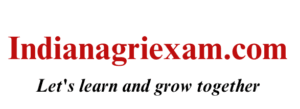14 Principles of Management (By Henry Fayol)
S.No. | Principle | Explanation |
1 | Division of Labour | Specialization increases efficiency; divide work among individuals/departments |
2 | Authority and Responsibility | Authority (right to command) must be balanced with Responsibility (duty to perform) |
3 | Discipline | Respect for rules, agreements, and policies |
4 | Unity of Command | One employee should receive orders from one superior only |
5 | Scalar Chain (Line of Command) | Clear chain of authority from top to bottom |
6 | Unity of Direction | One head and one plan for group activities with the same objective |
7 | Subordination of Individual to General Interest | Organizational interest over personal interest |
8 | Remuneration | Fair compensation for both employer and employee |
9 | Centralization | Decision-making power concentrated at top levels |
10 | Initiative | Employees encouraged to take initiative within set limits |
11 | Order | People and materials in right place at right time |
12 | Stability of Tenure | Long-term employment promotes efficiency and loyalty |
13 | Equity | Fair and respectful treatment by managers |
14 | Esprit de Corps | Team spirit and harmony among personnel |
📌 Unity of Command complements the Scalar Chain
📌 In Delegation, only authority is transferred, not responsibility
📌 Zone of Indifference: Concept related to how much authority subordinates will accept
Authority Types
Type | Meaning |
Line Authority | Direct responsibility to achieve organizational goals; authority flows vertically |
Staff Authority | Advisory role; provides guidance/support to line managers |
Functional Authority | Delegated authority to control specific processes/activities across departments |
Other Important Terms in Management
Term | Meaning |
Functional Departmentation | Most widely used method of organizing based on similar functions (e.g., marketing, finance) |
Line and Staff | Concept explained by G. Hicks |
Committee | Small group assigned a task for in-depth analysis or decision-making |
Audit | Official examination and verification of records |
Synergy | “Whole is greater than the sum of its parts” |
Role | Set of tasks associated with a given position in the organization |
Power | Ability to influence or direct actions and beliefs of individuals or groups |
Modern Developments in Management
- Total Quality Management (TQM): Continuous improvement in products/services with customer focus
- Six Sigma: Process improvement technique aimed at reducing defects
- Lean Management: Eliminating waste without sacrificing productivity
- SWOT Analysis: Strategic tool for Strengths, Weaknesses, Opportunities, and Threats
- Benchmarking: Comparing one’s performance with best practices
- ERP (Enterprise Resource Planning): Integrated software for streamlining business processes
Bonus Terms for Quick Revision
Term | Meaning |
Benchmarking | Comparing with industry leaders or best practices |
KRA (Key Result Area) | Areas crucial for organizational success |
KPI (Key Performance Indicator) | Metrics to measure performance in key areas |
SWOT Analysis | Tool for strategic decision-making (Strengths, Weaknesses, Opportunities, Threats) |
Contingency Approach | No one best way to manage; it depends on situation |
Additional Contributions of Management Thinkers
Thinker | Contribution |
Henri Fayol | Administrative Theory, 14 Principles of Management |
F.W. Taylor | Father of Scientific Management |
Max Weber | Bureaucratic Management Theory |
Peter Drucker | Management by Objectives (MBO) |
Elton Mayo | Hawthorne Studies, Human Relations Approach |
Chester Barnard | Zone of Indifference, Informal Organizations |

